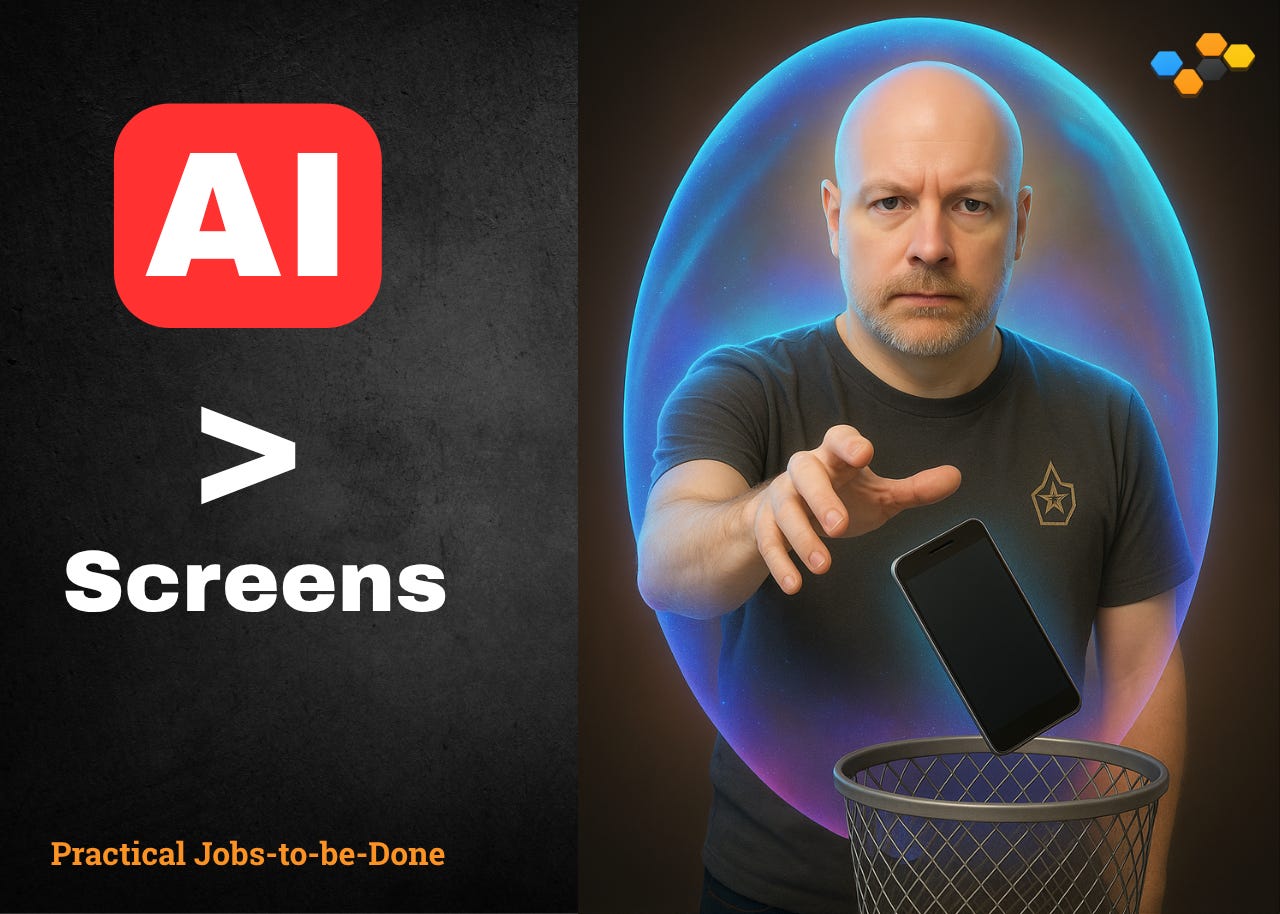The Invisible Interface: How Screenless Tech Will Get Your Jobs Done Differently
A look a the AI, ambient systems, and outcome-driven principles behind the next wave of productivity
Table of Contents
The Tyranny of the Tiny Screen: Why Our Current Mobile UI Paradigm is Ripe for Disruption
The Unseen Costs of Constant Connectivity
What Jobs Are We Really Hiring Our Smartphones For?
The Smartphone Slab: A Temporary Evolutionary Step?
Elevating the Abstraction: The Core of Screenless Innovation
Shifting from Features to Outcomes
The Power of Invisible Solutions
Technologies Enabling This Shift (Working Today, But Underutilized)
The Novel Strategy: Principles for Designing Screenless Interactions
Outcome-Driven Design as the Foundation
Key Pillars of the Screenless Future
Examples in Action: Reimagining Common Tasks
Getting It Done Completely Differently: The True Innovation
The Path Forward & Implications
Benefits for Businesses and Individuals
Challenges and Considerations
The Role of JTBD in Navigating this Transition
Keep reading with a 7-day free trial
Subscribe to The Practical Innovator's Guide to Customer-Centric Growth to keep reading this post and get 7 days of free access to the full post archives.





